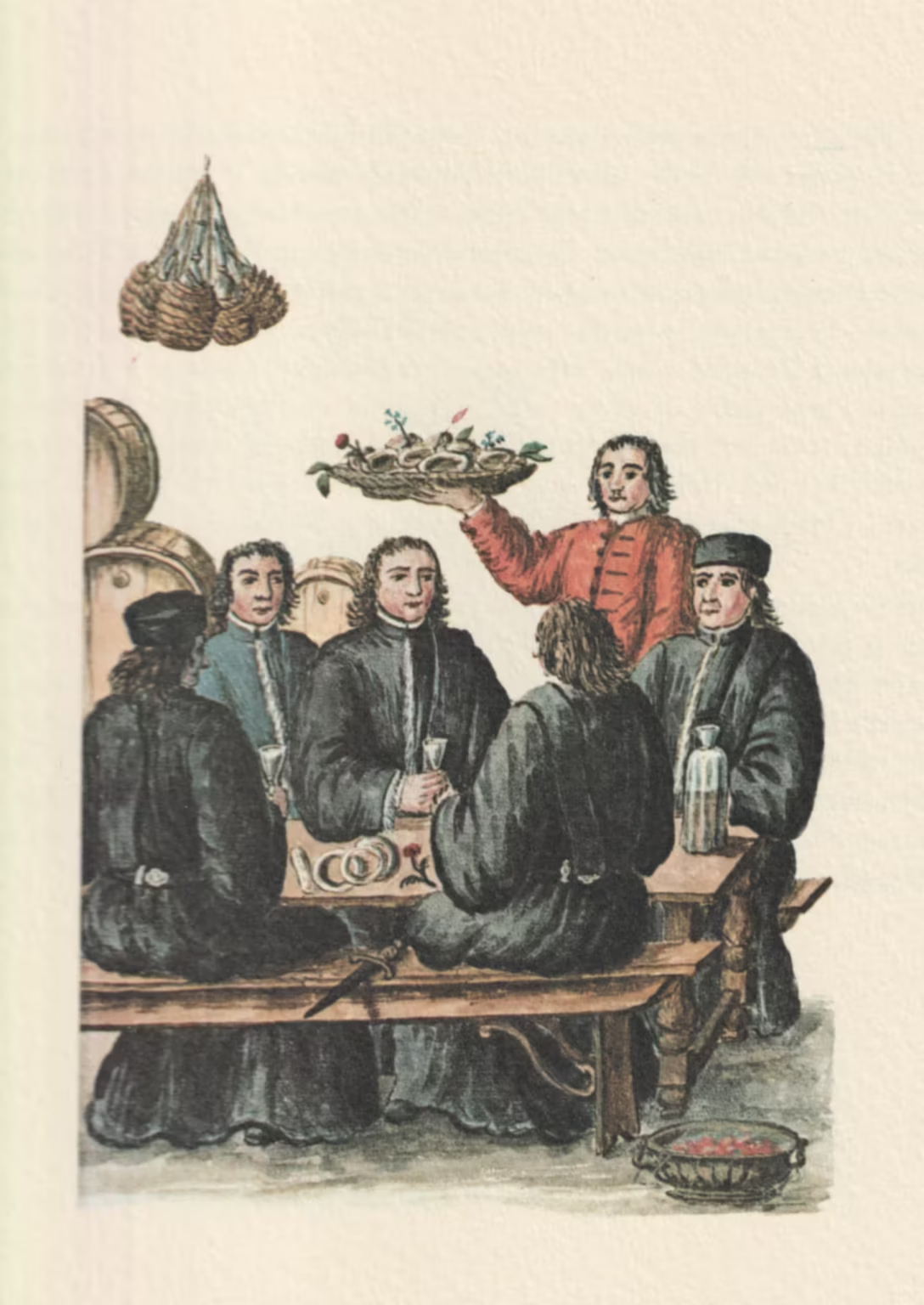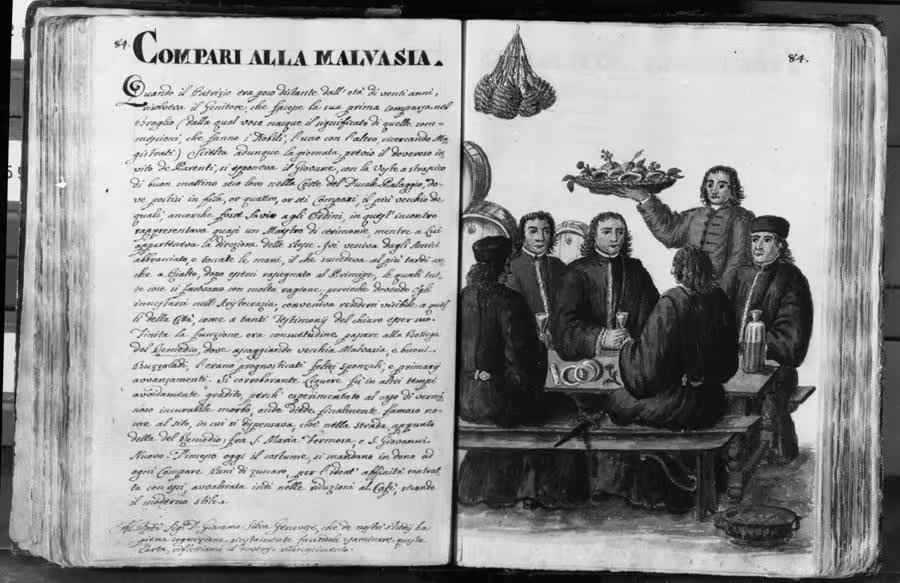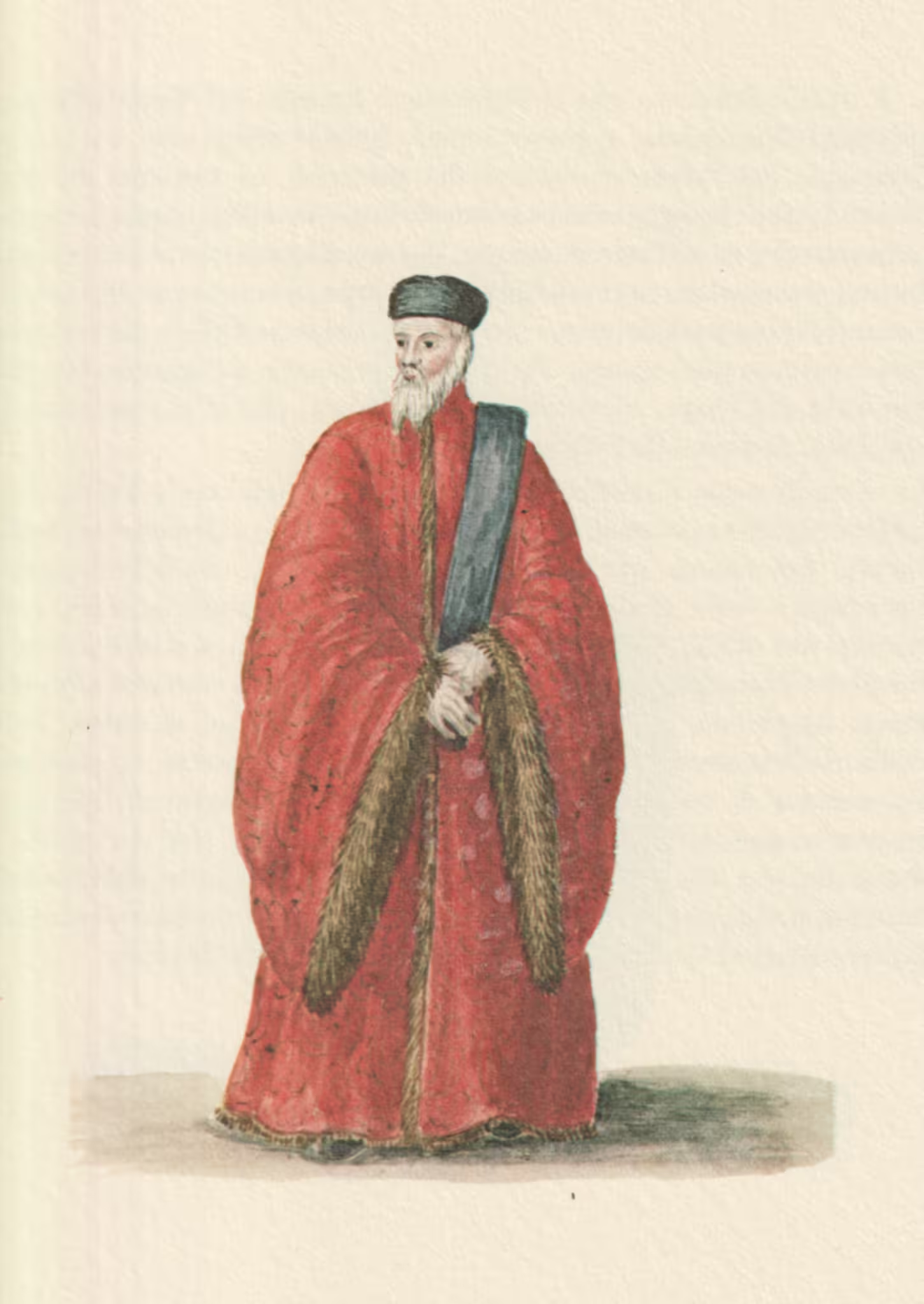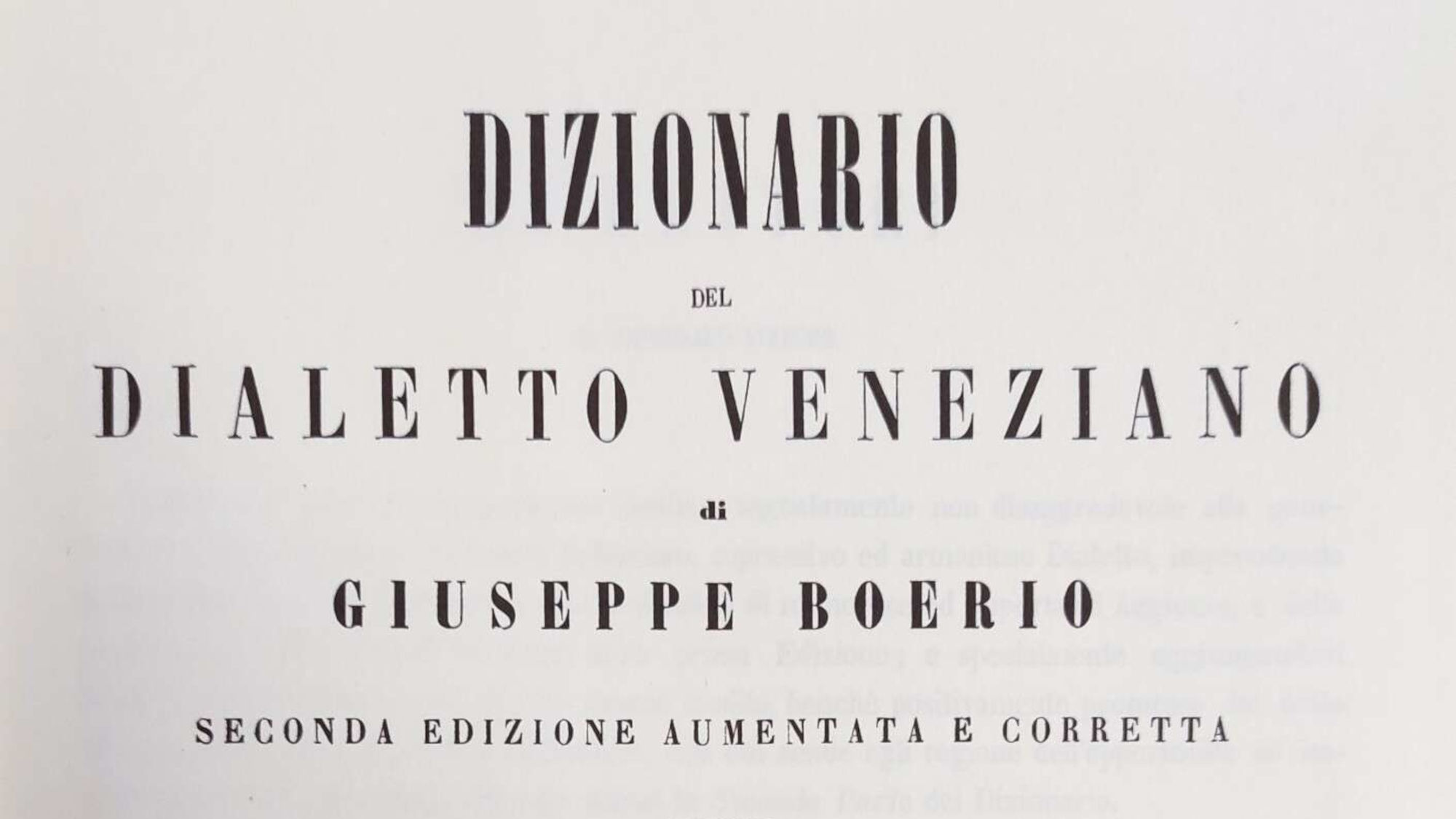Young noblemen had their debut in politics at the age of twenty, in the courtyard of the Palazzo Ducale.
After the presentation, they went to celebrate with Malvasia wine, and bussolai, traditional sweet cakes from Burano.
The painting depicts four young noblemen, dressed in formal robes, seated in a tavern, where they are served wine, and cakes.
Source: Gli abiti de veneziani di quasi ogni età con diligenza raccolti e dipinti nel secolo XVIII, by Giovanni Grevembroch (1731–1807), which in four volumes contains over six hundred watercolours of how Venetians dressed in the 1700s.

Malvasia Companions
When the Patrician was shortly before twenty, his Parent resolved that he should make his first appearance in the Broglio1 (from which word arose the meaning of those submissions that Nobles make to one another when seeking Magistracies). The day having been chosen, therefore, after the dutiful invitation of the Parents, the Young Man, with his robe trailing, would appear with them early in the morning in the Court of the Ducal Palace, where either four, or six Companions would line up in a row, the eldest of whom, as if he was already Savio agli Ordini,2 at this meeting acted almost as a Master of Ceremonies, while the direction of the same belonged to Him.
There he would be embraced by his friends and his hands touched, as would also happen later at the Rialto, after he had resigned himself to the Prince, all of which were done with great reason; for, as he was about to join the aristocracy, it was fitting to make himself visible to those of the city, as to many witnesses to his illustrious nature. After the service, it was customary to move on to the Bottega del Remedio, where, tasting old Malvasia3 and good Bussolai,4 he was promised happy returns and great advancements.
This fortifying liqueur was once avidly appreciated, having been tested in cases of incurable verminous disease, and thus finally gave a famous name to the place where it was dispensed, namely, the street called Calle del Remedio, between Santa Maria Formosa and San Giovanni Nuovo. Today, the custom has been abandoned, and sugar-loaves are sent as gifts to every Companion, due to the supposed affinity they had for them, given value later during the meetings at the Café,5 according to the modern style.
To the Reverend Mr. Giacomo Genovese, who has full knowledge of our studies by rightly having this Charter examined, we reflect due recognition.
Translator’s notes
- The Broglio or brolo was an area in Piazza San Marco, where the Venetian nobility met before the sessions of the <em>Maggior Consiglio</em>, to discuss matters more informally. ↩︎
- The Savi agli ordini were originally entrusted with matters of the navy and the Stato da Mar, but later it became an entry-level position for young noblemen starting their political career. ↩︎
- Malvasia was a Greek wine, which was very popular in Venice, as attested by the many street names mentioning it. ↩︎
- Bussolai are traditional Venetian sweet cakes, usually in doughnut shape, originally from Burano. The name derives from bussola, which means a compass. ↩︎
- See also the painting Nobili al Cafè — Noblemen at the Café. ↩︎

Original Italian text
Compari alla Malvasia
Quando il Patrizio era poco distante dall’età di venti anni, risolveva il Genitore, che facesse la sua prima comparsa nel Broglio (dalla quale voce nacque il significato di quelle sommessioni, che fanno i Nobili, l’uno con l’altro, ricercando Magistrati). Scielta adunque la giornata, previo il doveroso invito de Parenti, si esponeva il Giovane, con la Veste a strascico di buon mattino seco loro nella Corte del Ducale Palaggio, dove postisi in fila, or quattro, or sei Compari, il più vecchio de quali, ancorche fosse Savio agli Ordini, in quest’incontro rappresentava quasi un Maestro di cerimonie, mentre a Lui apparteneva la direzione delle stesse.
Ivi veniva dagli Amici abbracciato, e toccate le mani, il che succedeva al più tardi anche a Rialto, dopo essersi rassegnato al Principe, le quali tutte cose si facevano con molta ragione; percioche dovendo Egli innestarsi nell’Aristocrazia, conveniva rendersi visibile a quelli della Città, come a tanti Testimonij del chiaro esser suo. Finita la funzione era consuetudine passare alla Bottega del Remedio, dove assaggiando vecchia Malvasia, e buoni Buzzoladi, l’erano prognosticati felici sponzali, e primarij avvanzamenti.
Si corroborante Liquore fù in altri tempi avvidamente gradito, perch’esperimentato al caso di verminoso incurabile morbo, onde diede finalmente famoso nome al sito, in cui si dispensava, cioè nella Strada, appunto detta del Remedio, fra S. Maria Formosa, e S. Giovanni Nuovo. Dimesso oggi il costume, si mandano in dono ad ogni Compare Pani di zuccaro, per l’ideat’affinità contratta con essi, avvalorata indi nelle riduzioni al Cafè, secondo il moderno stile.
Al R.ndo Sig.e D. Giacomo Genovese, che de nostri studij ba piena cognizione giustamente facendo esaminare questa Carta, riflettiamo il doveroso riconoscimento,
Grevembroch (1981), vol. 1, p. 84.
Related articles
- Gli abiti de veneziani — by Giovanni Grevembroch
- Nobili al Cafè — Noblemen at the Café — by Grevembroch
- Scaleter — seller of bussolai and ciambelle — by Zompini
- Pien Collegio, of which the Savi agli Ordini were part.
- Venice rhymes with Wine
Bibliography
- Grevembroch, Giovanni. Gli abiti de veneziani di quasi ogni eta con diligenza raccolti e dipinti nel secolo XVIII, orig. c. 1754. Venezia, Filippi Editore, 1981. [more]





Leave a Reply